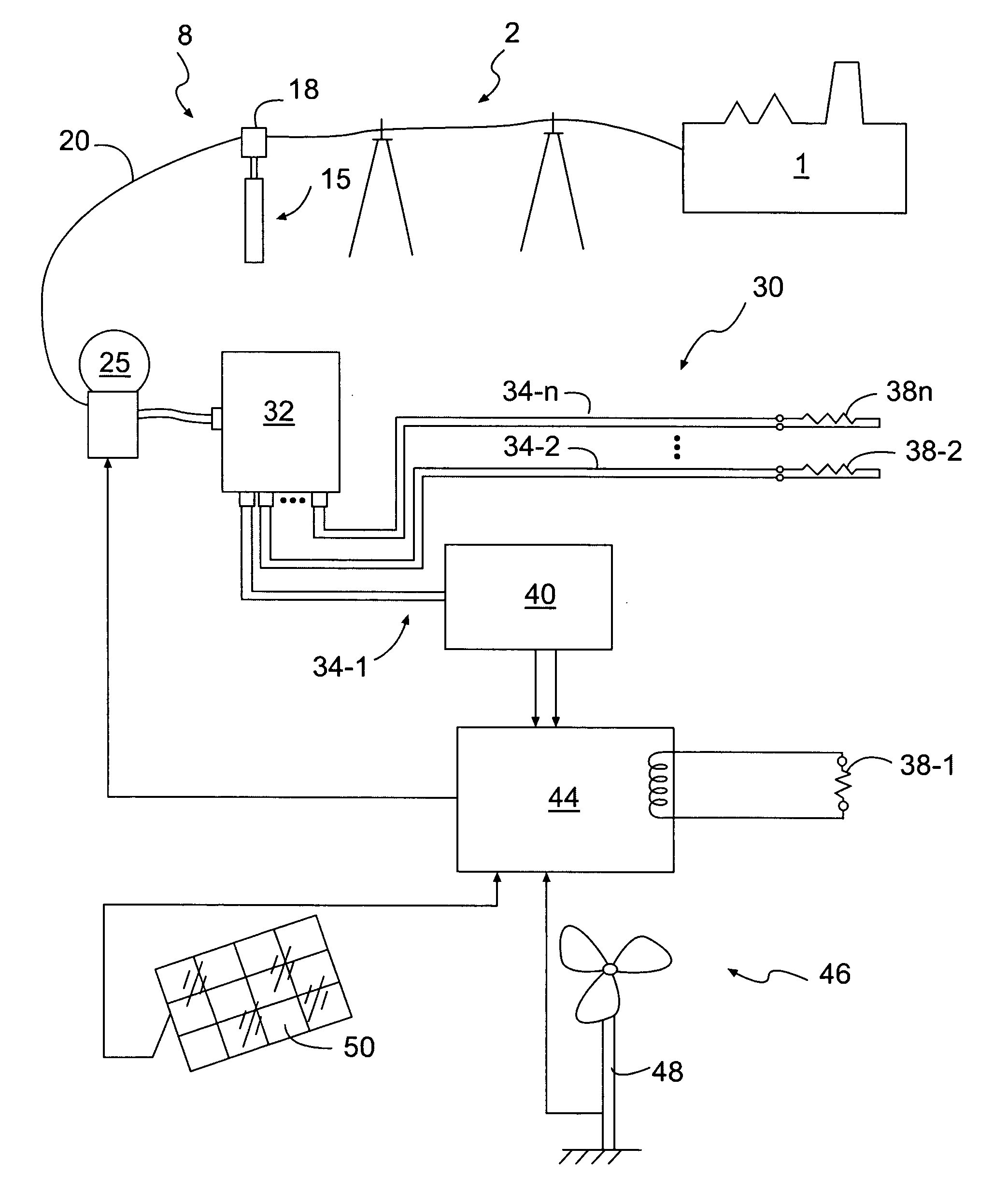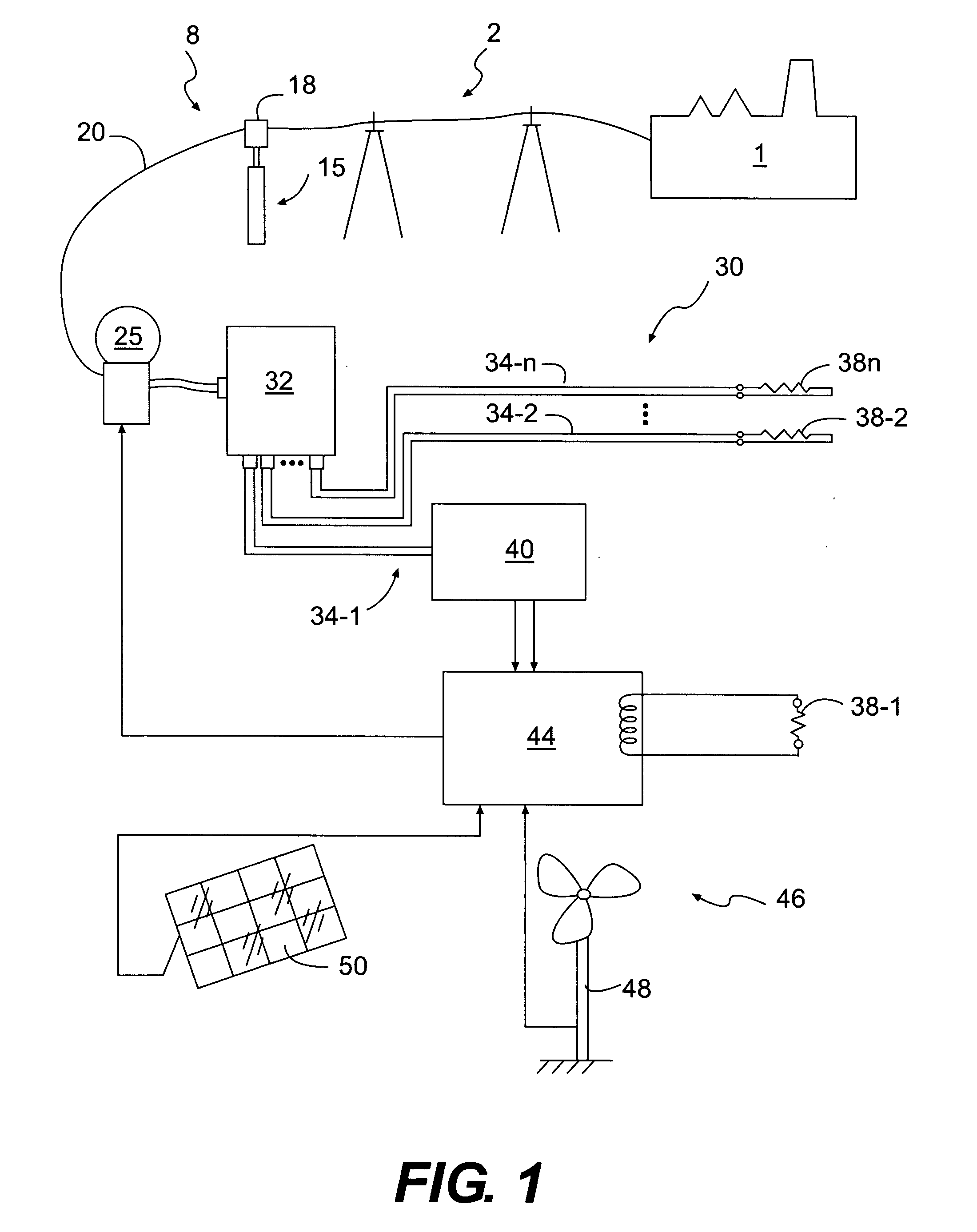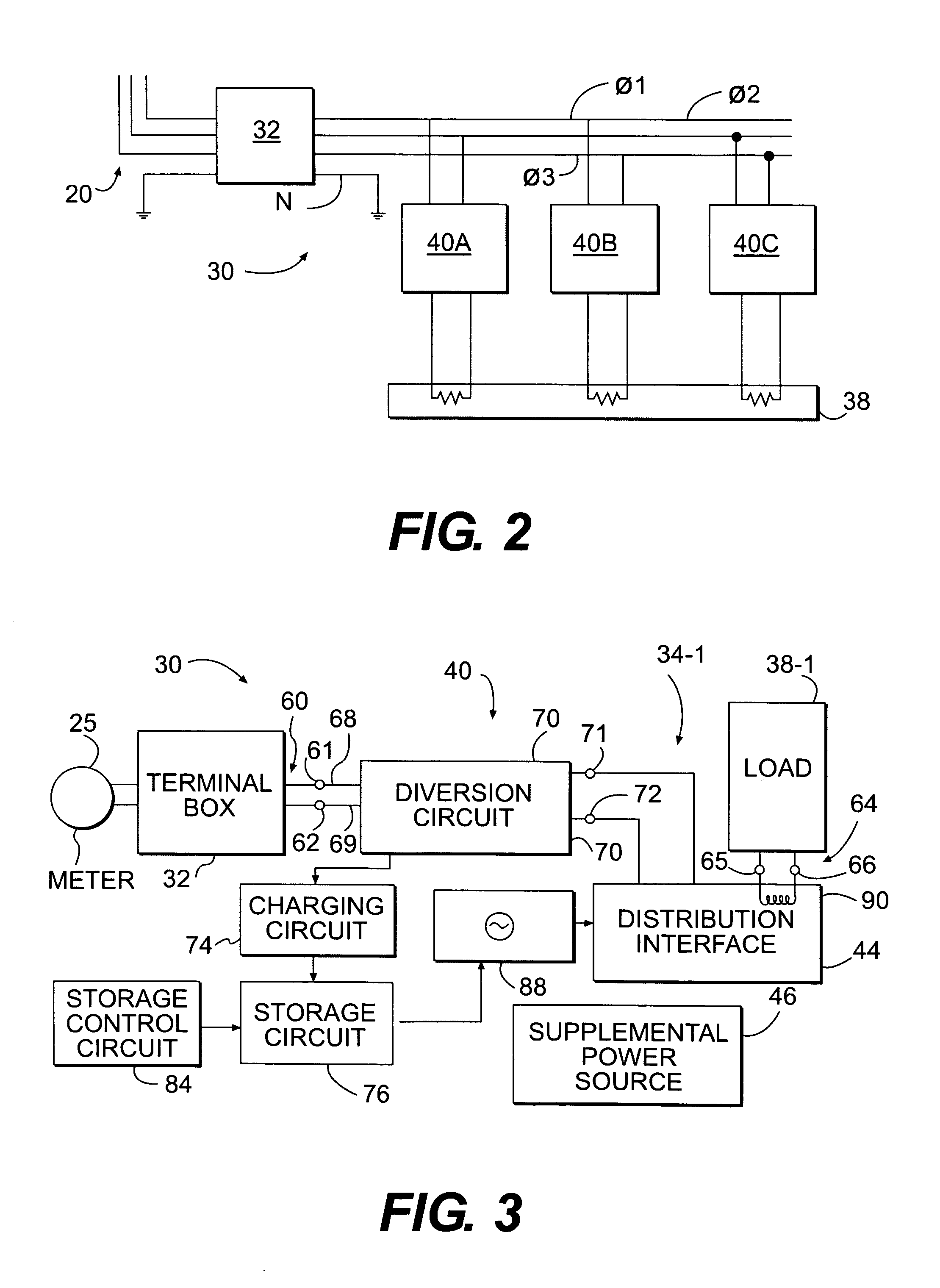Efficient power system
a power system and energy saving technology, applied in the direction of greenhouse gas reduction, transportation and packaging, ac network load balancing, etc., can solve the problems of increasing power generation capacity, large capital expense required when increasing capacity, and difficulty in locating a new power plan
- Summary
- Abstract
- Description
- Claims
- Application Information
AI Technical Summary
Benefits of technology
Problems solved by technology
Method used
Image
Examples
Embodiment Construction
[0026]Embodiments of the present invention include a system and method for efficient use of power supplied from a utility to a load or loads in a facility. A utility will commonly comprise a commercial power company franchised to supply electricity. However, a utility will also include a source customarily comprising a main source of power for a facility. A facility may include a home, office or industrial building, or may include a combination of buildings.
[0027]Utilities provide power at a voltage approximating a rated line voltage. Each nation specifies a rating for line voltage. For example, in the United States, alternating current rated line voltage is 110 volts. Commonly, utilities may supply 105-120 volts to utility lines rated at 110 volts. Appliances and other items designed for use in the United States will operate satisfactorily when supplied at a nominal voltage level, 107 volts, for example. Therefore, the energy embodied in a portion of a power input sine wave above 1...
PUM
 Login to View More
Login to View More Abstract
Description
Claims
Application Information
 Login to View More
Login to View More - R&D
- Intellectual Property
- Life Sciences
- Materials
- Tech Scout
- Unparalleled Data Quality
- Higher Quality Content
- 60% Fewer Hallucinations
Browse by: Latest US Patents, China's latest patents, Technical Efficacy Thesaurus, Application Domain, Technology Topic, Popular Technical Reports.
© 2025 PatSnap. All rights reserved.Legal|Privacy policy|Modern Slavery Act Transparency Statement|Sitemap|About US| Contact US: help@patsnap.com



